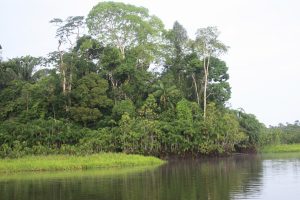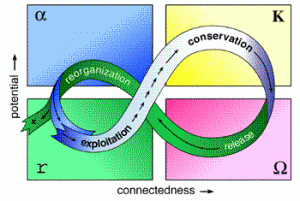To mark the week of the action for the Climate Emergency we have some posts about different ways of understanding and responding to the crisis.

(Yasuni National Park)
Andrew Curry writes: Jeremy Lent’s book The Patterning Instinct is about how human societies all over the planet have seen and understood patterns of change. A recent post on his blog tries to make sense of some recent events, including the burning of the Amazon forests. As he notes, whatever our view of Brazilian ranchers and the their government’s blind eye, “the subtler, and far more powerful, forces driving us to the precipice come from the Global North.”
He references Ecuador’s unsuccessful attempt to keep oil drilling out of the Yasuni National Park. Western governments failed dismally to turn their warm words into actual financial contributions.
“The simple lesson is that our global leaders currently have no intention to make even the feeblest steps toward changing the underlying drivers of our society’s self-destruction.”
Growth, collapse and renewal
It’s gloomy stuff. But in Lent’s post, it’s a preamble to a walk through “a general theory of change”, developed to understand systemic transformation. Some readers will recognise this as a version of the Panarchy model, developed to understand growth, collapse and renewal in forests.
(Source: The Sustainable Scale Project)
What’s true for forests is also true of human systems.To explain it briefly: when potential is high, and connectedness low, the system is open to change. This is typically because it is coming out of a crisis and a lot of connections have failed or broken. The ‘exploitation’ stage is when the system is making new connections, building different types of social capital and new institutions.
The system prospers during the ‘conservation’ phase, as a result of this re-building. In ‘release’, it’s living off its capital. Yes, the language comes from ecology, and takes a little translation.
New institutions
Putting this into a historical context, for example in the UK, ‘reorganisation’ might be thought of as the 1930s and World War II. ‘Exploitation’ might be the new institutions that followed (e.g. the welfare state and the building of new towns and houses). ‘Conservation’ is the prosperity of the ’60s and early ’70s, and ‘release’ is the long unwinding of the the ’80s and ’90s.
There is a warning in the model. Reorganisation doesn’t always lead to rebuilding. Sometimes there’s a collapse instead.

(Source: School Strike, Melbourne)
New connections
But we’re clearly in a reorganisation phase at the moment. New ideas take root and create new connections and new constituencies. This is why the Green new Deal is suddenly the stuff of Presidential campaigns and mainstream British political party proposals. The current wave of school strikes for the climate are part of the same phenomena.
There are, of course, less desirable futures trying to take hold in the same terrain–often dystopian legacies from the system that has run out of energy. But the point is this: this political moment, in the top left of the diagram, is a radically open future, where dramatic change is possible.
The picture of Yasuni National Park at the top of the post is by ALAI, Agencia Latinoamericana de Información, CC BY-SA 4.0.)

